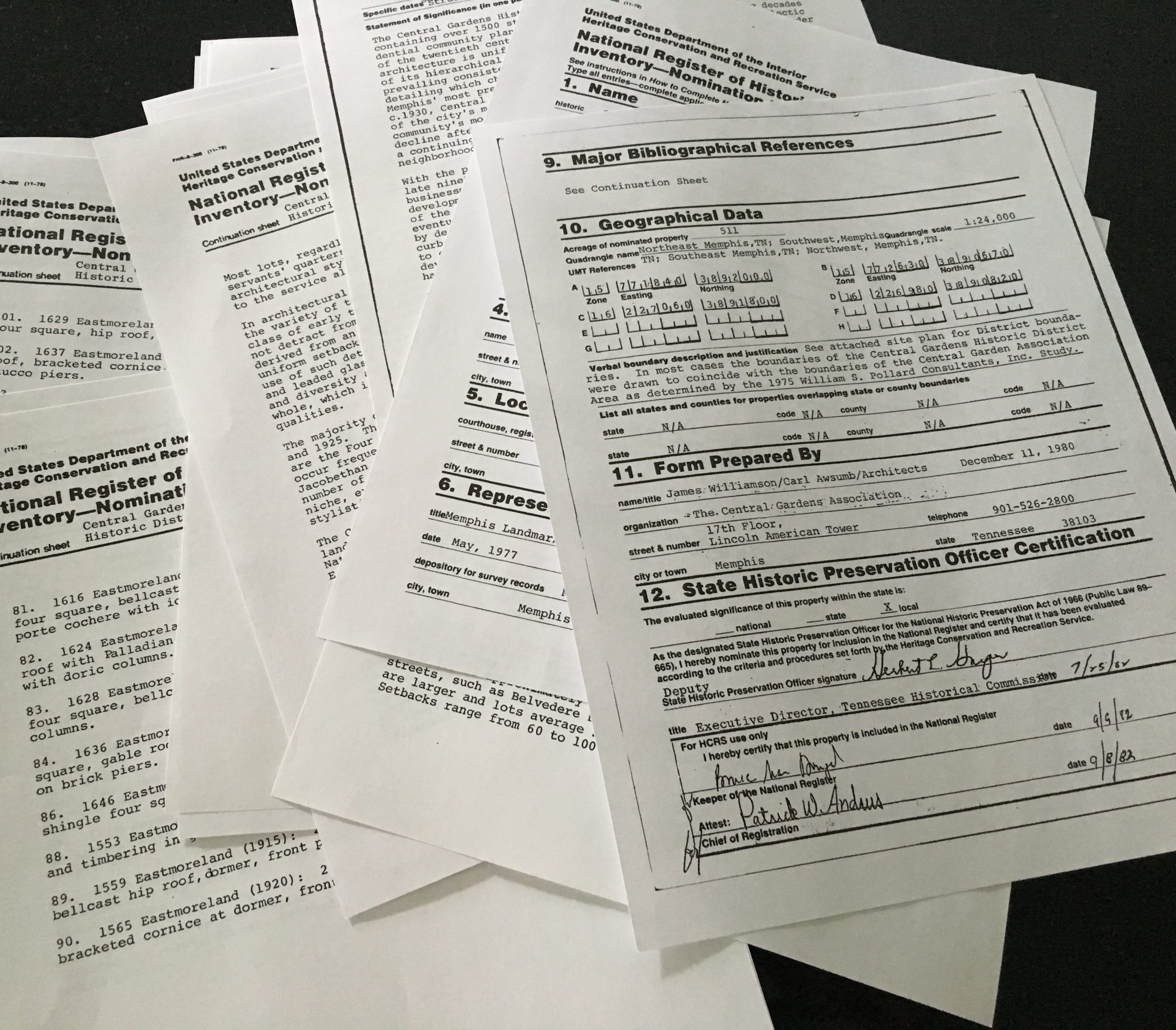A long-overdue update to the National Historic Register for the Central Gardens Historic District to begin in 2020
HISTORIC NEIGHBORHOOD PRESERVATION
By Mark Fleischer
“I resolved that one day I too would live in this gracious neighborhood.”
Jim Williamson, architect and co-author of the Central Gardens Handbook, wrote that elegant passage in 1998, for his preface to the second edition of the handbook, reminiscing on the moment he knew he wanted to one day live in Central Gardens, on one of those old-fashioned, idyllic streets. Gracious. His reflections go deep into the heart and soul of why we honor historic preservation.
The Central Gardens Neighborhood Association is moving forward on conducting a re-survey to update the out-of-date 1982 Central Gardens historic district nomination. Central Gardens at that time was composed of 511 acres, 83 blocks, and 1540 structures. They are all documented in what is called the Inventory of the National Register of Historic Places nomination form, below.

The work on the first survey and inventory was performed in concert with the city’s new Memphis Landmarks Commission (MLC), established in 1975, which inventoried historic structures throughout Memphis, including a survey of Central Gardens in May of 1977. Based on that survey, the original nomination was prepared by architects Jim Williamson and the Carl Awsumb and it was registered by the Tennessee Historical Commission in August 1982.
How It Works
Gaining a listing on the National Register of Historic Places doesn’t just happen. The National Park Service and U.S. Department of the Interior, which supports the Register program, does not scan the country’s horizon looking for properties, structures, sites, or districts that need to be considered for eligibility.
Being added to the list starts locally. It starts from the lobbies and sitting rooms of the very structures worthy of preservation. It begins in the neighborhood, from local evening walks or from front porches, sitting with a beer or a glass of wine in hand, on “a fragrant summer evening, redolent of honeysuckle, the broad-eaved houses bathed in the amber glow of the old fashioned street lights.” (Jim Williamson, 1998)

* * * * * *
Volunteers on Foot
And the inventory and survey itself? The work of listing an entire district is handled by volunteers, on foot, house by house, clipboards and cameras in hand. Such volunteer efforts were the case with the original Central Gardens listing.
Led by Jim Williamson and Carl Awsumb 40 years ago, and with assistance from Barbara Viser (author of Central Gardens – Stories of a Neighborhood), the original effort took up to two years and required a few dozen Midtowners.
“Jim had the criteria we had to follow,” said former resident Jill Hortenstine Iglehart, “but we each had a number of properties we had to visit and list according to style, building material used, size, etc. We had just moved to the neighborhood in December of 1978, and I remember helping to catalogue all the houses. It was a fun project and good for me as we were relatively new to the neighborhood, and I learned so much about the styles of architecture.”
It’s the type of preservation effort that brings a neighborhood together, while also educating residents on the unique, eclectic architecture of their neighborhood. Such efforts also restore a sense of ourselves and our local history. “Getting a building or district on the National Register makes people aware that what they have in the city is something of value in terms of their heritage,” said Memphis Heritage executive director John Hopkins in 1982. “It makes people rediscover and take a second look.”
Preservation is however about much more than just the sum of heart, soul and heritage. “Preservation,” said a Memphis Landmarks Commission study in 2003, “makes dollars and sense. The economic impact of historic preservation on Memphis is not only significant; it is substantial.”
CLG Empowers, Supports Historic Communities
As a Tennessee Certified Local Government (CLG), Memphis is empowered by the state to protect its historic assets and identify local priorities. The CLG program also provides support and technical advice from the State Historic Preservation Office (SHPO) – the SHPO for Memphis is the Tennessee Historical Commission – and it lays out guidelines.
CLG guidelines suggest that a resurvey be performed every ten years. It was almost thirty years after the original that a follow-up survey was finally performed, in 2006. However those survey results were never recorded at the Tennessee Historical Commission, so there is no accurate up-to-date inventory of the resources in the district, leaving the 1982 survey the only listing of record.
Resurveying in 2020

That 1982 nomination inventory is now incomplete. It has inadequate property descriptions and many contributing (now historic) buildings are currently listed as non-contributing (not historic by National Register standards) because the inventory was prepared 42 years ago. Some structures have been demolished and new ones have been constructed, and there is no written record of these changes over time for Central Gardens’ Landmarks Committee or the Memphis Landmarks Commission to reference.
Additionally, the nomination has the 1500 structures listed block by block rather than the much more accessible alpha-numeric property listings generally used on nominations.
The resurvey would be a two-part process beginning in the summer of 2020, starting with volunteers on foot reviewing each house, compiling a new inventory on official Tennessee Historic Commission forms (including digital photos), and finally the drafting of a new nomination.
The updated survey and nomination would be a planning tool, make the Memphis Landmarks Commission’s review process easier, would be helpful to realtors, developers and be a source of pride to “this gracious neighborhood.”
Later in the year the Central Gardens Neighborhood Association will be asking for volunteers both from within and outside the neighborhood, and will be organizing community meetings to educate the neighborhood and general public on the re-surveying process.
Mark Fleischer is current board President of the Central Gardens Neighborhood Association.

